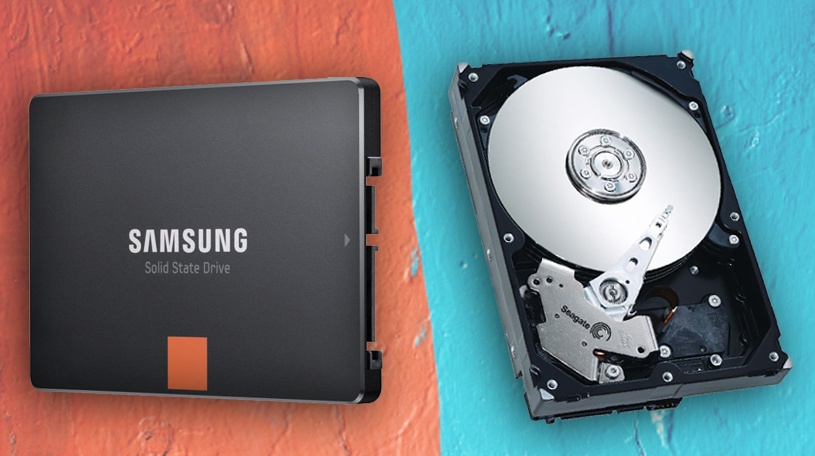
A Guide to the Best External HDD and SSD
In the realm of digital data storage, external hard drives continue to reign supreme. Whether you’re an IT professional safeguarding vital data or a creative professional managing an ocean of multimedia content, external storage devices, specifically Hard Disk Drives (HDD) and Solid State Drives (SSD), offer reliable solutions. This article will explore these technologies and shed light on the selection criteria for these indispensable tools.
An SSD, or Solid State Drive, is a type of storage device that uses flash memory to store data. SSDs are known for their superior speed, efficiency, and durability. Unlike traditional hard drives, they don’t have moving parts, reducing the risk of data loss due to physical damage. The lack of mechanical components also contributes to faster data access times, making SSDs the preferred option for tasks requiring quick data retrieval and high-speed transfers.
In contrast, the HDD, or Hard Disk Drive, is a seasoned warrior in the field of data storage. It uses magnetism to write data onto a rotating platter, a tried-and-tested method that has been used for decades. While it might not match the speed and efficiency of an SSD, the HDD shines in terms of cost-per-gigabyte, offering larger storage capacities at a fraction of the price.
Choosing the right external hard drive involves a careful assessment of several crucial factors:
- Memory Capacity: The size of the drive should align with your storage requirements. While a photographer may need multiple terabytes to store high-resolution images, a student might find a few hundred gigabytes ample for their needs.
- Speed: If your work involves transferring large files frequently, then speed is a significant factor. Here, SSDs with their faster data transfer rates have a clear advantage over HDDs.
- Connection Interface: The connection interface, such as USB 3.0, USB-C, or Thunderbolt, affects the speed of data transfer. Choose a drive that matches the ports on your primary device to maximize compatibility and speed.
- Backup Button: Some drives come with a physical backup button for instant data backup. This can be a convenient feature if regular data backup is a part of your workflow.
- Data Protection Systems: Look for drives with built-in encryption for enhanced data security. Some drives also come with bundled software that aids in automatic backup and password protection.
- Shock Resistance: If your lifestyle involves a lot of travel or your work environment is prone to physical shocks, a rugged, shock-resistant hard drive would be a wise choice. SSDs are generally more robust than HDDs due to the absence of moving parts.
In the world of external hard drives, there’s no one-size-fits-all solution. Your choice between an HDD and an SSD, and the specific model you choose, should hinge on your unique requirements. With a clear understanding of what each type of drive offers and the factors to consider, you’ll be well-equipped to make an informed decision that optimizes your data storage and access needs.

The best external drives
The Seagate Expansion is an external hard drive that has garnered a reputation for its user-friendly approach and excellent performance. It comes in various capacities, from a modest 500GB to a massive 4TB, catering to a broad spectrum of storage needs. Boasting a fast USB 3.0 connection, it ensures speedy file transfers that save you precious time when dealing with large data volumes. It is preformatted for Windows, making it a plug-and-play device, though reformatting is required for Mac users. Additionally, its compact and sleek design provides portability without sacrificing robustness. The Expansion is an excellent choice for someone seeking a blend of simplicity and functionality.
Next, the Samsung M3 Portable is an external hard drive that perfectly encapsulates Samsung’s commitment to delivering reliable, high-quality products. Its capacities range from 500GB to 4TB, offering ample choices to suit individual storage requirements. With a USB 3.0 interface, the M3 ensures efficient data transfers while being backward compatible with USB 2.0. Notably, it features SafetyKey protection, offering password protection and backup for your precious data. The drive is also known for its Durability, boasting a rugged design that can withstand everyday wear and tear.
Lastly, the Toshiba Canvio Basics hard drive is a testament to Toshiba’s pursuit of practical, user-centric design. It is available in a range of capacities from 1TB to 4TB, ensuring a fit for almost every user. Offering USB 3.0 connectivity, the Canvio Basics guarantees swift data transfer, while its simplicity ensures that even the least tech-savvy users can get started immediately. Its compact design, combined with a built-in shock sensor and ramp loading technology, makes it resilient against possible damage, an essential feature for those constantly on the move.
In summary, the Seagate Expansion, Samsung M3, and Toshiba Canvio Basics each present an appealing proposition in terms of storage, speed, and durability. They each cater to slightly different user preferences, so the best fit for you will depend on your specific needs and the features you value most. Whether it’s Seagate’s seamless usability, Samsung’s emphasis on data security, or Toshiba’s sturdy design, rest assured that you’ll be getting a reliable storage solution to safeguard your digital data.




